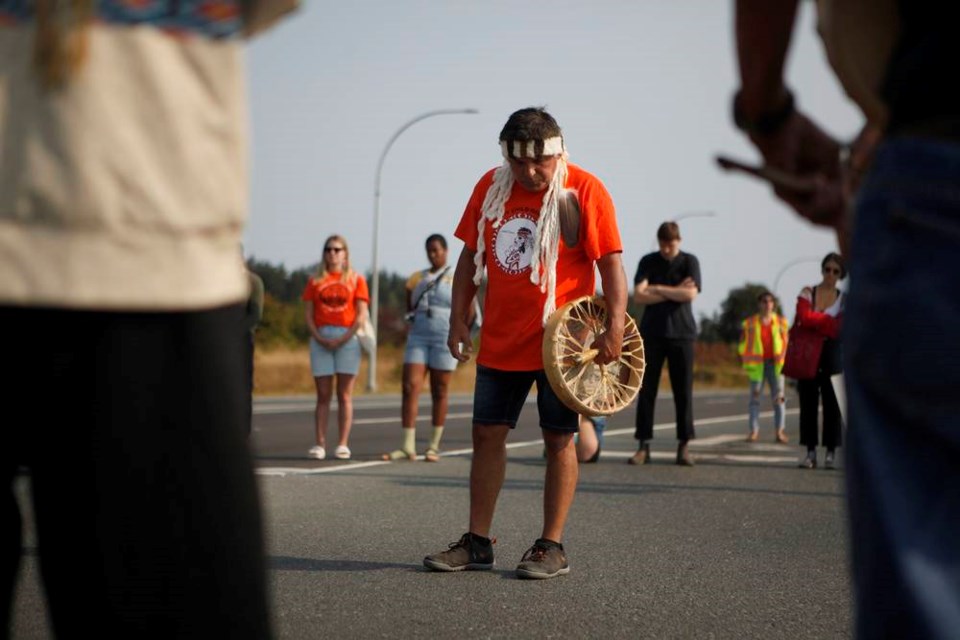People packed the streets of Chemainus on Monday for the Penelakut’s Nation’s March for the Children, walking shoulder to shoulder, in honour of the missing children and survivors of the residential school at Penelakut Island. Most of them wore the orange Every Child Matters T-shirts that have come to serve as a reminder of the suffering caused by residential schools.
The crowd in Chemainus was joined in Central Saanich by about 200 members of the W̱SÁNEĆ nation and their supporters who marched along the Patricia Bay Highway at Mount Newton Cross Road. Their march closed a section of the highway between 9 a.m. and 10 a.m.
Some drivers got out of their cars and joined the marchers, who had gathered for the healing walk in solidarity with the Penelakut Nation.
The Penelakut Nation and neighbouring First Nations held their march and gathered for speeches in remembrance of children who never made it home and the survivors of a residential school on Penelakut Island, formerly known as Kuper Island.
Using ground-penetrating radar, about 160 undocumented and unmarked graves have been recently found on the grounds.
After the protest, the members made their way back to the nearby Tsawout First Nation where some spoke of the memories they carry.
“The children were crying ‘Help us, help us’ — and now the whole world knows,” said Liz Underwood, an elder and residential school survivor. “It means so much to me that my children and my grandchildren are now learning about this but it still hurts, it hurts so bad.”
Others who attended the march were too young to have gone to the schools but still remember the stories they heard.
“We were watching television one night and it was a story about a prison,” said Romaine Underwood, a member of the Tsawout First Nation. “A residential school survivor remarked how the sound of the doors clanging shut brought up memories of a similar sound when the doors to the dormitories were closed at night.”
While this protest was in solidarity with Penelakut’s Nation, it also strikes close to home.
“We offer our prayers for them because we were in the catchment area, some of our children could have gone to that residential school,” said STIWET Elliott, a Grade 7 to 12 teacher and member of the Tsawout First Nation.
“Many of our children lost their language, they lost their culture in an act of systemic cultural genocide. Some members of the tribe even ran away so that their children wouldn’t be taken.”
During Monday’s protest, traffic was directed to secondary routes, causing delays for people trying to get to Swartz Bay ferry terminal. Protesters also chose the same intersection to shut down in February and October 2020. The first time was in support of five Wet’suwet’en hereditary chiefs who opposed the Coastal GasLink pipeline. In October the demonstration was over Mi’kmaq fishing rights.
Central Saanich public works crews deployed barriers to direct traffic while Emcon Services had their whole 20-person road crew manning the intersections leading up to Mount Newton Cross Road.
“All in all, people have been behaving today. Because of the time of year, there has been more traffic this time than in October,” said Stewart Westwood, division manager for Emcom South Island. “Still, the traffic north did not start to back up until later due to the hour of the day. Traffic was much lighter heading south.”
- - -
Comment on this article by writing a letter to the editor: [email protected]



